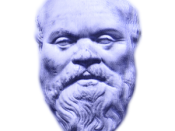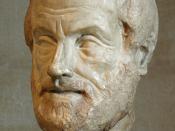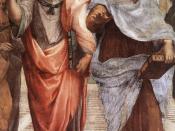The previous years of evolution have indicated that human development cannot be fully effective without reinforcing the limits of our toleration. The answer to how much of our liberty we allow to be breached is in the physical and emotional response to the infraction. The French revolutions were inspired by feelings of containment brought on by an oppressive absolute monarch, accordingly the violent reaction was indicative of a move towards liberal enlightenment. Similarly, both world wars were fought to uphold the freedoms enjoyed by most of the western hemisphere, while bloodshed and loss of life were inevitable for both the allies and axis, the affection felt by both counterparts for their conflicting regimes deemed the losses acceptable. In both scenarios the line between liberty and suppression was distinguishable by the consequence of crossing such a line. It can also be said that in both scenarios the "enemy" had a name and face.
Whether it was Louis XVI or Hitler the adversary was distinguishable. The most recent example, the focus of this essay, has neither one particular name nor any identifiable feature to label it foe. Terrorism is the covert enemy most successful in the past decade. Although we can blame certain groups for certain assaults we cannot solve the issue by eradicating any particular leader. Nevertheless, supporters of autonomy felt a convinced sentiment of invasiveness when terror struck the hubs of liberty, New York and London. Reminding us not to take for granted the freedom and safety we regularly enjoy, this faceless and nameless assembly left a bitter sting in the souls of libertarians. Once again history reminds us that leisure is a character with its own antagonists. And since the reaction felt by the majority was concurring and sovereignty cannot defend itself, it was clear that this harm warranted...


